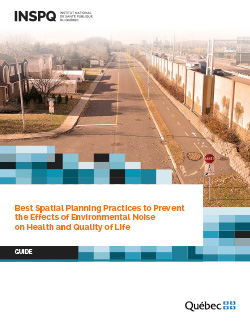Best Spatial Planning Practices to Prevent the Effects of Environmental Noise on Health and Quality of Life
- There are many sources of noise, which increase the difficulty of mitigating the effects. Some examples are noise from road and air traffic, as well as rail noise, noise from port (harbor) facilities or from construction sites.
- Land-use planning and management are some effective and key noise control and mitigation measures. These measures are planned and implemented by regional county municipalities (RCM), municipalities and proponents.
- There are various best environmental noise mitigation practices, from active transportation to street design, by way of the orientation of buildings and inner rooms, not to mention noise barriers and the addition of plants arranged in an optimal manner. Although the effectiveness of several of these measures has been quantified, they are poorly known.
- Since environmental noise has harmful effects on people’s physical and psycho-social health and quality of life, applying these solutions will help properly protect sensitive places (residences, childcare and day-care centres, schools, hospitals, recreational parks, etc.), but also industrial, commercial, and recreational activities, as well as spaces designated for transportation infrastructure.
- In fact, the effects of noise are not limited to auditory effects, because they also have an impact on sleep, cardiovascular diseases, learning in educational institutions and the social acceptance of activities or projects.


